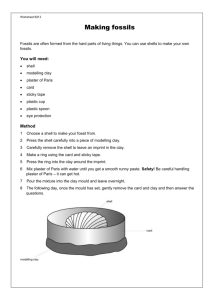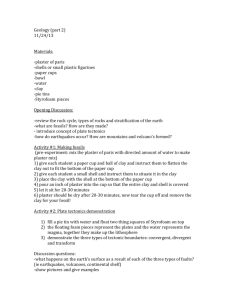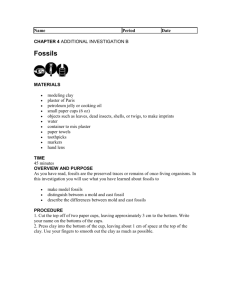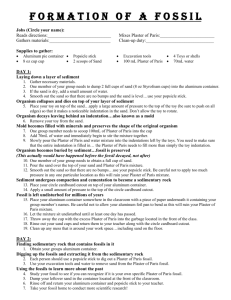Fossil Model Lab - Davis School District
advertisement
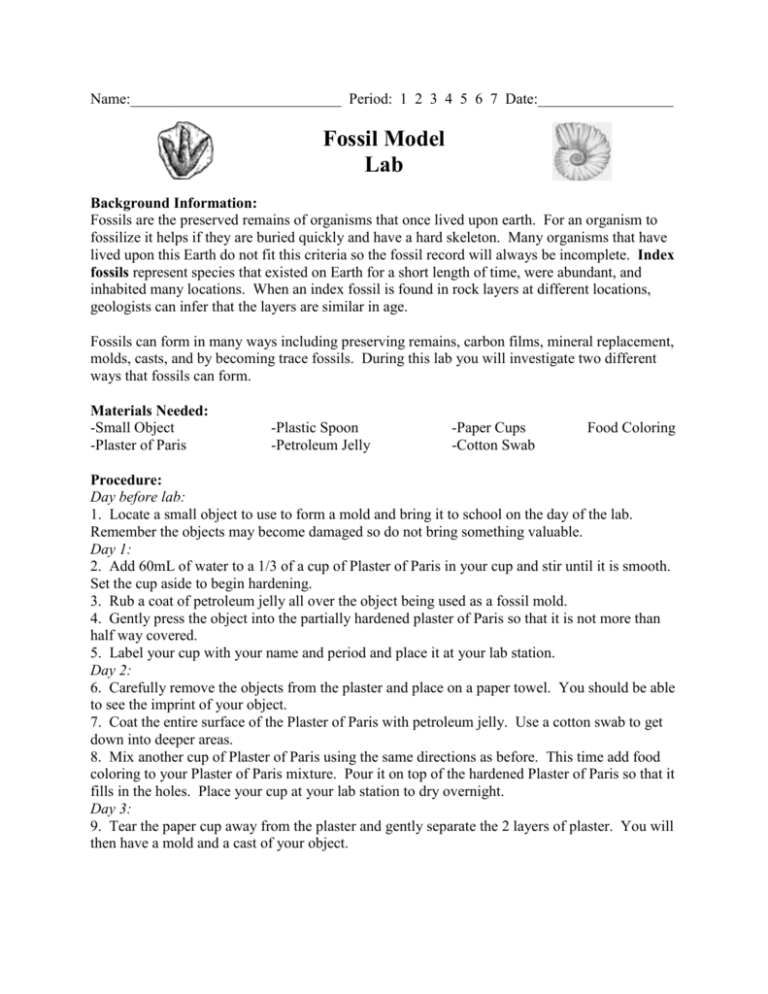
Name:____________________________ Period: 1 2 3 4 5 6 7 Date:__________________ Fossil Model Lab Background Information: Fossils are the preserved remains of organisms that once lived upon earth. For an organism to fossilize it helps if they are buried quickly and have a hard skeleton. Many organisms that have lived upon this Earth do not fit this criteria so the fossil record will always be incomplete. Index fossils represent species that existed on Earth for a short length of time, were abundant, and inhabited many locations. When an index fossil is found in rock layers at different locations, geologists can infer that the layers are similar in age. Fossils can form in many ways including preserving remains, carbon films, mineral replacement, molds, casts, and by becoming trace fossils. During this lab you will investigate two different ways that fossils can form. Materials Needed: -Small Object -Plaster of Paris -Plastic Spoon -Petroleum Jelly -Paper Cups -Cotton Swab Food Coloring Procedure: Day before lab: 1. Locate a small object to use to form a mold and bring it to school on the day of the lab. Remember the objects may become damaged so do not bring something valuable. Day 1: 2. Add 60mL of water to a 1/3 of a cup of Plaster of Paris in your cup and stir until it is smooth. Set the cup aside to begin hardening. 3. Rub a coat of petroleum jelly all over the object being used as a fossil mold. 4. Gently press the object into the partially hardened plaster of Paris so that it is not more than half way covered. 5. Label your cup with your name and period and place it at your lab station. Day 2: 6. Carefully remove the objects from the plaster and place on a paper towel. You should be able to see the imprint of your object. 7. Coat the entire surface of the Plaster of Paris with petroleum jelly. Use a cotton swab to get down into deeper areas. 8. Mix another cup of Plaster of Paris using the same directions as before. This time add food coloring to your Plaster of Paris mixture. Pour it on top of the hardened Plaster of Paris so that it fills in the holes. Place your cup at your lab station to dry overnight. Day 3: 9. Tear the paper cup away from the plaster and gently separate the 2 layers of plaster. You will then have a mold and a cast of your object. 10. Leave the cast and mold at your lab station. You will rotate around all lab stations. In the table, record your predictions of what the objects were that different students used to make fossilized impressions of. 11. Wash your objects and take them home if you wish or dispose of them in the trash. 12. Complete the follow up lab questions. Fossil Predictions: Student’s Name Predicted Fossil Identification Actual Fossil Identification Follow-Up Lab Questions: 1. What is the difference between a fossil cast and a fossil mold? 2. Was it easier to identify the objects using the molds or the cast? Explain why. 3. Which of these organisms-a clam, a jellyfish, a crab, and a mushrooma. Would make good fossils? b. Would not make good fossils? c. Explain your answers. 4. How is your identification of objects similar to what a geologist studying fossils does?


